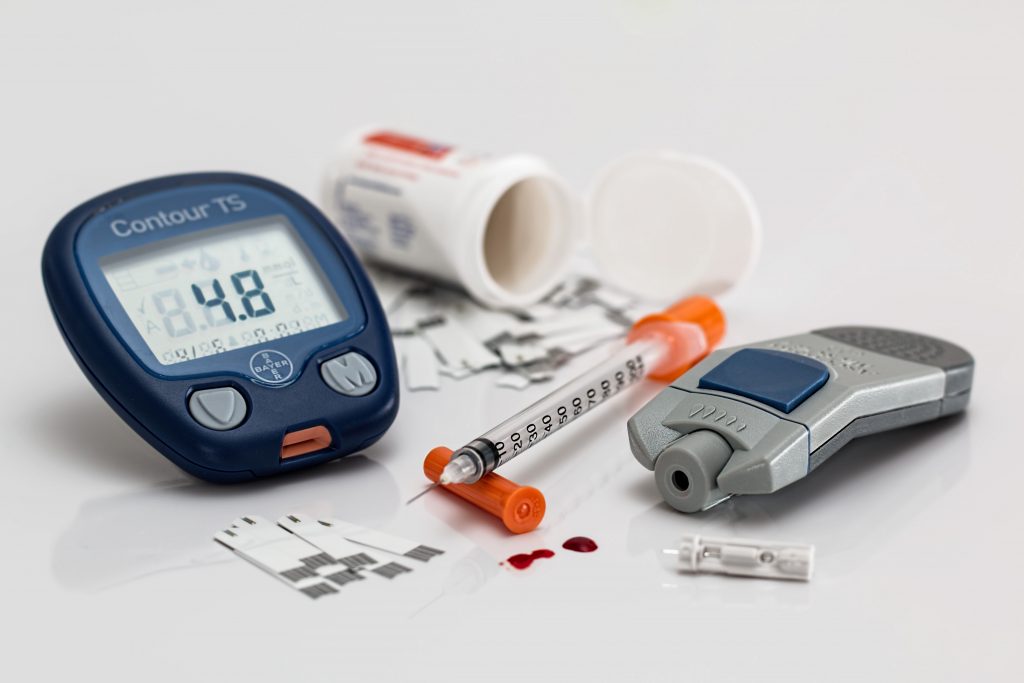Chronic health conditions more prevalent as older adult population grows
More people are living longer than ever before as health care, pharmaceuticals and medical technology have continued to improve over the last couple of decades. Unfortunately, the older a person becomes, the potential for developing one or more chronic conditions rises.
Around 80 percent of senior citizens have at least one chronic disease and 77 percent have two or more, according to the National Council on Aging. Heart disease, cancer, stroke and diabetes account for nearly two-thirds of all deaths of older adults each year.
Chronic diseases often negatively affect people’s daily lives, particularly if they are not addressed. Chronic illness can reduce an individual’s ability to perform basic tasks such as walking up steps, lifting objects, taking a bath, dressing or eating a meal.
Along with the growing prevalence of older people living with chronic diseases comes much higher rates of emergency room visits and hospitalizations. Seniors with chronic illness incur much greater health costs than those without ongoing conditions.

Top 10 chronic health conditions among seniors
The National Council on Aging has listed the top 10 chronic diseases affecting the health of Americans aged 65 or older. They include:
Coronary heart disease: Coronary heart disease is the leading cause of death among both men and women. It is also the most common type of heart disease and results in the death of more than 370,000 people each year.
Coronary heart disease affects major arteries that distribute blood, oxygen and nutrients to the heart. Plaque, which contains cholesterol, builds up in the arteries and blocks or reduces blood flow to the critical organ. Over time, clogged arteries weaken and become damaged. The loss of blood flow often causes chest pain, shortness of breath, heart attack and death.
What to do: People who experience the symptoms of coronary heart disease should immediately visit their doctor for early detection and intervention. Once diagnosed, health experts also encourage getting plenty of sleep, limiting the intake of salt and sugar, reducing stress levels, monitoring consumption of saturated and trans fats and doing plenty of cardio exercise such as running or walking. Smoking is also discouraged.
Hypertension: Nearly 60 percent of older adults are treated for hypertension, also known as high blood pressure. The condition affects both how much blood the heart pumps through arteries and how resistant the arteries are to the volume of blood flow.
For instance, narrow arteries greatly reduce the amount of blood flowing through them and place extra force on the walls of the arteries, leaving the body’s organs starved for oxygen. Consistent high blood pressure can lead to serious health conditions like heart attack or stroke.
What to do: People with hypertension should follow their doctor’s directions. Physicians may prescribe medication and they encourage patients to maintain a healthy weight, exercise every day, reduce salt and alcohol intake, manage stress levels and check blood pressure frequently.
High cholesterol: One out of every three American adults have high cholesterol, putting them at greater risk of experiencing heart disease or stroke, the two leading causes of death. The condition occurs when blood has too much LDL, or bad cholesterol, circulating throughout the body. Waxy deposits then build up within the arteries and block the flow of blood to the body’s organs.
Cholesterol levels are determined by many factors, including the amount of saturated and trans fats consumed as well as genetics. HDL is the type of cholesterol the body needs to produce blood cells and eliminate bad cholesterol.
What to do: The only way to detect high cholesterol is by a blood test. Once diagnosed, people with high cholesterol should follow their doctor’s advice and take prescribed medications. Physicians typically advise those with high cholesterol to exercise every day, cut out smoking, reduce alcohol consumption, manage weight and eat a healthy diet containing a minimal amount of saturated or trans fats.
Arthritis: Arthritis is one of the most common chronic illnesses in the nation and is a major cause of work disability in the U.S. Nearly 55 million Americans suffer from arthritis, a painful condition resulting from inflammation of the joints. People with arthritis suffer pain, stiffness, swelling and redness at the source of inflammation.
There are two types of arthritis. The most common form is osteoarthritis, which occurs when the cartilage protecting the end of the bone at the joint wears down over time. Hands, knees, hips and spines are the most common joints affected by osteoarthritis.
Rheumatoid arthritis is an auto-immune disease that affects the entire body. The disorder occurs when the body mistakenly attacks joints rather than bacteria and viruses. As a result, joints become inflamed and the protective tissue that lines the joints – called synovium – thickens, causing pain and swelling. If inflammation isn’t reduced, joints will lose cartilage, likely resulting in permanent joint damage.
What to do: Diagnosis and treatment are the first line of attack for arthritis. Physicians typically advise patients with arthritis to stay within their recommended weight to reduce pressure on knees. They also urge people to combine aerobic, strength-building and stretching exercises five times each week to improve function and decrease pain. In addition, patients should ensure that the back, legs and arms are always supported. 
Diabetes: More than 30 million Americans have diabetes in which the body doesn’t produce enough insulin or any at all. Insulin regulates blood glucose levels and is used by the body to get energy from food and distribute to blood cells.
Most people have Type 2 diabetes, which means the individual’s body can’t make enough insulin to keep blood glucose at healthy levels. The bodies of those with Type 1 diabetes don’t produce insulin at all.
The prevalence of diabetes among people 65 years of age or older is higher than those of other age groups. According to the American Diabetes Association, one in four people older than age 60 is living with diabetes, nearly all with Type 2. This age group often also has high blood pressure or high cholesterol and is at greater risk for complications such as heart attacks, stroke or kidney failure.
Symptoms include:
• Frequent urination
• Constant thirst
• Hungry despite having eaten
• Blurry vision
• Fatigue
• Weight loss (Type 1)
• Tingling or numbness in hands and feet (Type 2)
• Bruises or cuts that are slow to heal
What to do: People who experience any of the symptoms listed should see a doctor. Early detection and treatment of diabetes can prevent the development of complications. Eating healthy meals, getting exercise and medications can contribute to keeping blood glucose at proper levels.
Chronic kidney disease: Most people who have chronic kidney disease in the early stages aren’t aware they have it. But people with diabetes and high blood pressure are at greater risk of developing chronic kidney disease than those without those conditions.
Kidneys are two bean-shaped organs located beneath the ribcage at the back of the body. They are vital to good health because they filter out waste and extra fluid from the bloodstream. Without treatment, chronic kidney disease can lead to kidney failure and the need for dialysis or a kidney transplant. However, treatment can slow the progression of the disease and prevent the development of other chronic conditions.
What to do: Chronic kidney disease can only be detected by blood and urine tests. It is treated through medication and lifestyle changes. Doctors recommend that people with chronic kidney disease take steps to prevent risk factors such as diabetes and high blood pressure.
Heart failure: Nearly 6 million adults in the U.S. have heart failure, which happens when the heart is unable to pump enough blood and oxygen to support the body’s organs. As a result, the heart may become enlarged and arteries may narrow causing an increase in blood pressure. In addition, the heartbeat may speed up to compensate for the loss of oxygen to blood cells.
What to do: Heart failure isn’t curable but it can be treated under a doctor’s care. Treatments include lifestyle changes, medication, device implants or surgical procedures.
Depression: Depression is not a normal part of aging, but is a treatable medical condition that can affect people of any age. However, older adults are at higher risk of experiencing depression, particularly those with other illnesses. Depression is more than feeling blue. It is characterized by persistent feelings of sadness and hopelessness that won’t go away, difficulty concentrating or sleeping, a loss of interest in normal activities, change in appetite, fatigue, irritability and more.
What to do: People who experience symptoms of depression should seek help from a professional who may recommend medication or talk therapy. Experts also advise that people with depression should incorporate lifestyle changes such as reducing stress, exercising regularly and eating a healthy diet.
Chronic obstructive pulmonary disease: COPD is a major disability and the fourth leading cause of death in the U.S. More than 16 million people suffer from COPD, which is generally more prevalent among middle-aged to older adults.
COPD is a term for a group of conditions that cause lung damage, with the two primary types being emphysema and chronic bronchitis. It is marked by wheezing, shortness of breath, chest tightness and coughing. The condition is caused by a number of factors, including when airways and air sacs lose elasticity, the walls between air sacs are destroyed, the airway walls become thick and inflamed or airways become clogged because the body makes more mucus than usual.
What to do: People who experience the symptoms of COPD should visit a physician who may prescribe medications or advise surgical procedures in some cases. Doctors recommend that people with COPD avoid smoking and lung irritants and get enough nutrition since the condition often leads to decreased appetite.

Alzheimer’s disease and dementia: Alzheimer’s disease is the most common type of dementia, a condition that causes memory loss and difficulty thinking, making decisions and controlling emotions. About 5.8 million Americans aged 65 and older are living with dementia, a figure expected to nearly triple to 14 million by the year 2060. Alzheimer’s disease, which accounts for up to 70 percent of those cases, is the sixth leading cause of death in the U.S.
Alzheimer’s disease has a widespread effect, not only on the patient but on their family and friends. Family caregivers for people with Alzheimer’s disease face particular challenges as they care for their loved one. Caring for someone with Alzheimer’s disease can be a 24/7 proposition, affecting the caregiver emotionally, physically and financially.
According to the Alzheimer’s Association, studies show that family caregivers have a higher risk of heart disease, impaired kidney function, anxiety and depression as a result of the stress of caring for a loved one with Alzheimer’s.
Eventually, the physical and emotional toll on caregivers may require placement in memory care. This decision brings its own emotional burden, with anxiety and feelings of guilt.
Memory homes are specially equipped to care for people with Alzheimer’s disease and other dementias. Typically, the facilities are secure units because of Alzheimer’s patients’ tendency to wander. Staff members also provide structured activities and help residents with activities of daily living, such as getting dressed, showering and eating.
What to do: There is no cure for Alzheimer’s disease, but early detection and treatment can slow its progression. Studies have also indicated that exercise, sleep and diet also could slow or prevent the onset of the disease. Risk factors for Alzheimer’s include age, family history and genetics. Family history may be due to heredity, environmental factors or both.

Living with a chronic illness
Health experts are clear on the best way to live a healthy life at any age, even with a chronic condition. Apart from diagnosis and treatment by a physician, the top three lifestyle recommendations are:
• Eat a balanced diet
• Exercise
• Get enough sleep
People with chronic conditions who manage their symptoms can improve their quality of life and reduce health costs over time. But they must do this in partnership with and under the guidance of their physician.





